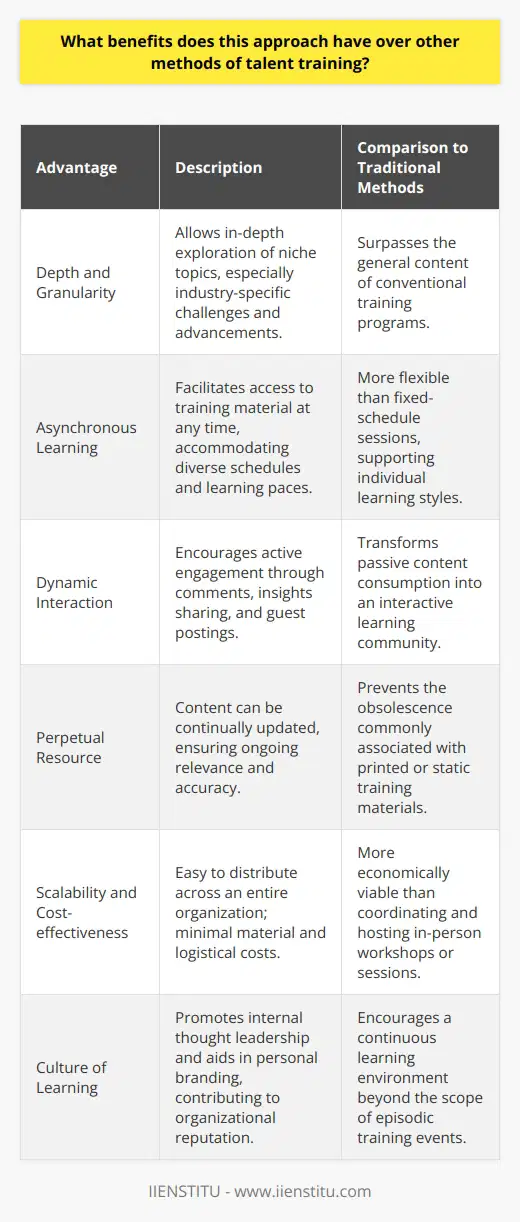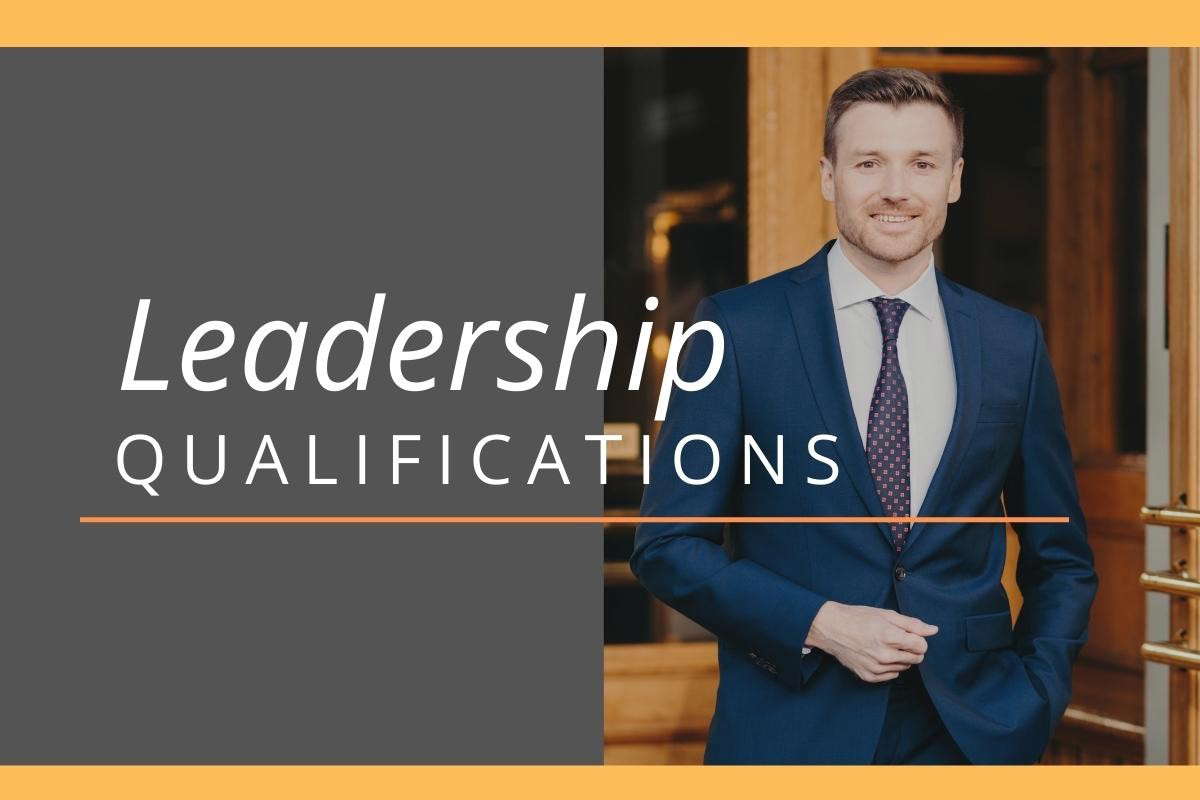
I still remember the first time I led a team of bright, talented individuals. At first glance, it seemed like a dream come true—imagine having a group of geniuses all aimed towards a common goal! But soon enough, I realized that raw talent isn't enough. Without proper guidance and structure, even the most gifted individuals can flounder. Over the years, I've learned that being talented requires more than mere innate ability; it's about understanding how to harness those gifts effectively.
Step 1: Establish the Structure
Step 2: Set Clear Goals for Talent
Step 3: Foster Collaborative Learning
One particular project stands out in my memory. We were tasked with developing a groundbreaking app within a tight deadline. The team was packed with experts—developers, designers, strategists—but despite the collective genius, we were falling behind schedule. It wasn't until we took the time to establish a proper structure that things began to click. In this article, I'll walk you through three essential steps that have helped me—and can help you—unlock talent and achieve quick success.
Operational Excellence Strategies For Peak Business Performance
Unlocking The Core Functions Of Human Resources Management Tips And Tricks
Step 1: Establish the Structure
The first step in taming talent is to establish a solid structure. Think of it like building a house—you wouldn’t start without a blueprint, right? Similarly, for talent to flourish, it needs a framework.
Defining Roles and Responsibilities
When I was assigned my first project lead role, I made the mistake of assuming that everyone knew their roles. It led to confusion, overlapping responsibilities, and missed deadlines. A successful manager or team leader must define specific roles and responsibilities to capitalize on each member's unique skills.
Leadership and skills go hand in hand here. It's not just about assigning tasks; it's about understanding each team member's strengths and areas for growth.
Here's how I approached it:
1- One-on-One Meetings: I scheduled individual meetings to understand each person's aspirations and skills.
2- Skill Mapping: We created a skill matrix to visualize the team's capabilities.
3- Role Assignment: Roles were assigned based on this mapping, ensuring everyone was in their zone of competence.
This not only ensures that each individual performs within an area where they are competent, but it also provides accountability if goals are not achieved. As the leader team, it's crucial to have clarity on who is responsible for what.
Establishing structure by defining individual and team goals and roles is necessary.
It is vital to set clear goals that reflect individuals’ talents and provide a direction for development.
It is required to foster collaborative learning by providing an environment for support and feedback.
Setting Team Goals
In addition to setting individual roles, it's critical to set clear team goals. During one project, we decided to set a team goal of increasing our productivity by 20% within three months. This gave everyone a shared objective to work towards.
Talent-tamed is an unstoppable force to achieve great success.
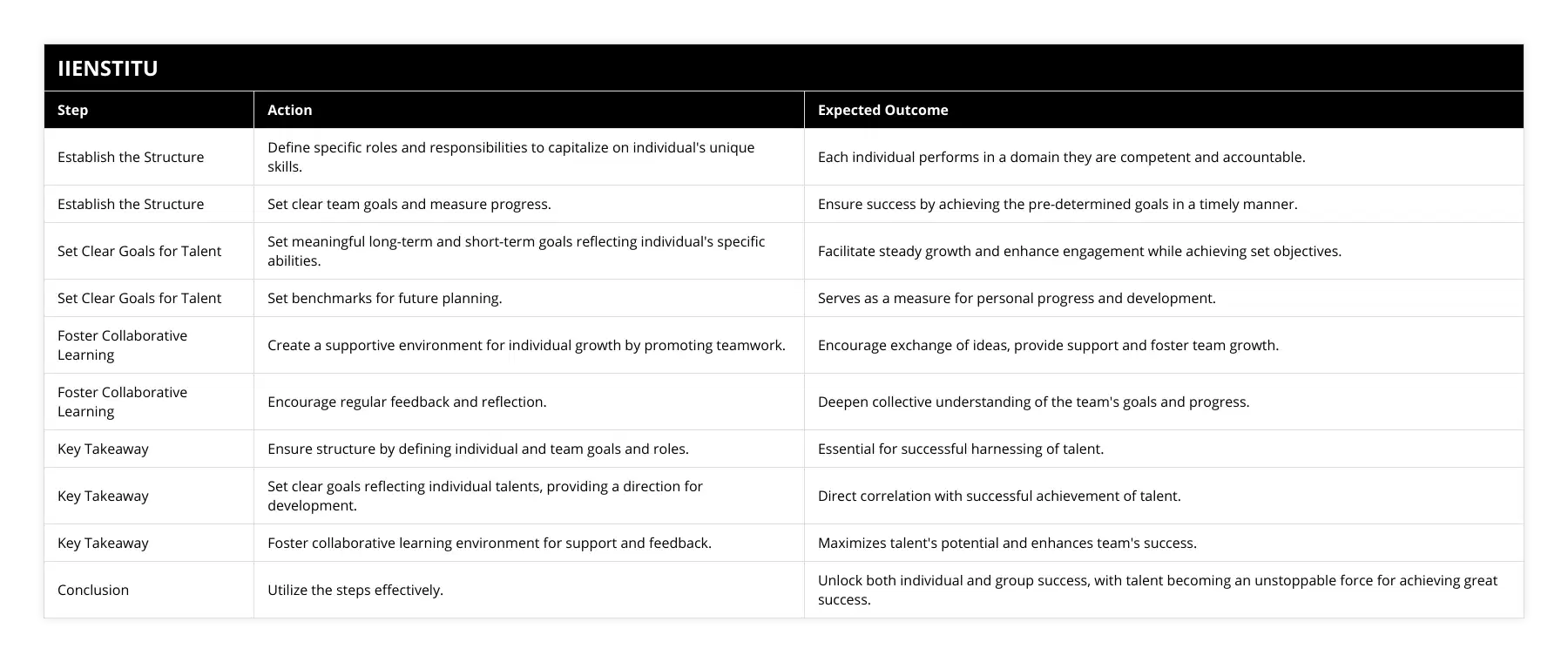
Setting these goals is an essential first step in the success of talent. Once these goals have been developed, team leaders must measure progress to ensure timely achievement. Tools like progress trackers or regular check-ins can be invaluable.
I recall reading in Stephen Covey's "The 7 Habits of Highly Effective People" about the importance of beginning with the end in mind. Having clear goals aligns the team's efforts and provides a roadmap for success.
Implementing Structure in Practice
Implementing structure isn't always easy. There might be resistance initially, especially from those who are used to a more free-form approach. However, structure doesn't mean stifling creativity. In fact, it provides the framework within which creativity can flourish.
Consider the following:
Set regular meeting times: Consistent communication keeps everyone on the same page.
Use collaborative tools: Tools like Trello or Asana can help visualize tasks and progress.
Establish protocols: Create guidelines for how tasks are approached and how communication is handled.
By working with a team to establish these structures, you ensure buy-in and cooperation.
Step 2: Set Clear Goals for Talent
Achieving success for talented individuals is directly related to setting meaningful goals. My mentor once told me, "A ship without a destination is lost at sea," and that couldn't be truer when it comes to talent.
Crafting Meaningful Goals
Goals should:
Reflect individual abilities: Align goals with each person's unique skills.
Provide clear direction: Ensure that everyone knows what they're working towards.
Include long-term objectives: This allows for future planning and setting benchmarks.
For instance, if you have a team member who's particularly good at analytics, set a goal for them to develop a new data model. Establishing long-term goals allows talented individuals to plan for the future and set benchmarks for themselves.
In Daniel Pink's "Drive: The Surprising Truth About What Motivates Us", he emphasizes the importance of autonomy, mastery, and purpose. Setting clear goals taps into these motivators, leading to higher engagement.
Short-Term Milestones
The critical step is to set specific and achievable short-term milestones that measure progress toward those goals. Short-term goals facilitate steady and observable growth toward achieving long-term objectives.
Here’s how you can do it:
1- Break down larger goals into smaller, manageable tasks.
2- Set deadlines for these tasks.
3- Monitor progress regularly.
As these goals are met, talent can be further encouraged, leading to enhanced engagement. It's amazing how meeting a small goal can boost morale and motivation.
Aligning Goals with Personal Development
One issue I’ve noticed is schools failing to support personal development in areas like goal-setting and self-management. As leaders, we need to fill that gap.
Some strategies include:
Encouraging self-reflection: Have team members assess their own strengths and weaknesses.
Providing resources: Offer books or workshops on personal development.
Mentorship programs: Pair less experienced members with seasoned professionals.
This not only aids in achieving project goals but also fosters personal growth, enhancing leadership and leadership skills within the team.
Step 3: Foster Collaborative Learning
Having established both individual and team goals, talent needs to be empowered. This can be done by fostering collaborative learning. Collaborative learning provides a means by which talent can exchange ideas, support each other, and grow as a team.
Promoting Teamwork
During a recent project, I noticed that when team members started working more closely together, their productivity soared. Managers and team leaders should actively promote teamwork:
Encourage open communication: Create an environment where team members feel comfortable sharing ideas.
Organize team-building activities: These can strengthen relationships and trust.
Facilitate knowledge sharing: Hold workshops or seminars where team members can teach each other new skills.
Continuing to foster a team-based approach to education can create a supportive environment for individual growth. Furthermore, leaders should encourage regular feedback and reflection to deepen the collective understanding of the team’s goals and progress.
In "The Wisdom of Teams" by Jon Katzenbach and Douglas Smith, the authors discuss how teams perform best when they have a strong commitment to collective goals and when they hold themselves mutually accountable.
The Power of Collaboration
When talent works together, the result is often greater than the sum of its parts. I've seen firsthand how collaborative efforts can lead to innovative solutions that might not have been discovered individually. Working with a team not only enhances individual capabilities but also propels the entire team towards success.
Consider the following benefits of collaborative learning:
Diverse Perspectives: Different backgrounds and experiences can lead to more creative solutions.
Skill Sharing: Team members can learn from each other's strengths.
Enhanced Problem-Solving: Collaborative efforts often lead to more efficient problem-solving.
Overcoming Barriers to Collaboration
Collaboration isn't without its challenges. Personality clashes, communication barriers, and differing work styles can hinder teamwork.
To overcome these barriers:
Establish clear communication channels: Decide on the platforms and methods for communication.
Set team norms: Agree on expectations for behavior and collaboration.
Address conflicts promptly: Don't let issues fester; address them early.
Leadership in team settings involves not just directing tasks but also facilitating a healthy team environment.
Case Study: Turning Talent into Triumph
Let me share a real-life example from my career. We were working on a critical project with tight deadlines. The team was composed of talented individuals, but progress was slow. We were disjointed, and morale was low.
I decided to implement the three steps outlined:
1- Established Structure: We redefined roles based on strengths and set clear responsibilities.
2- Set Clear Goals: We established both short-term milestones and long-term objectives aligned with individual talents.
3- Fostered Collaborative Learning: We held regular team meetings, encouraged open communication, and set up peer-learning sessions.
The transformation was remarkable. Productivity increased, and we not only met our deadlines but exceeded expectations. The team felt more connected and motivated.
The Role of Leadership Skills
Throughout this process, leadership skills skills play a pivotal role. As leaders, we must:
Communicate effectively: Clear, concise communication helps prevent misunderstandings.
Motivate and inspire: Encourage team members to reach their full potential.
Adapt and be flexible: Be ready to adjust strategies as needed.
In "Leaders Eat Last" by Simon Sinek, he emphasizes the importance of leaders who prioritize their team's well-being, fostering trust and cooperation.
Final Thoughts
We've delved into three essential steps for taming talent and achieving quick success:
1- Establishing structure by defining individual and team goals and roles.
2- Setting clear goals that reflect individuals’ talents and provide a direction for development.
3- Fostering collaborative learning by providing an environment for support and feedback.
By understanding how best to utilize their blazing potential, any team of talent can unlock both individual and group success. Remember, talent-tamed is an unstoppable force to achieve great success.
It's not just about managing tasks; it's about leadership and team dynamics, fostering an environment where talent can thrive. Whether you're a seasoned leader or new to leading teams, embracing these steps can make a significant difference.
References
Covey, S.R. (1989). The 7 Habits of Highly Effective People. Free Press.
Katzenbach, J.R., & Smith, D.K. (1993). The Wisdom of Teams. Harvard Business School Press.
Lencioni, P. (2002). The Five Dysfunctions of a Team. Jossey-Bass.
Maxwell, J.C. (2007). The 21 Irrefutable Laws of Leadership. Thomas Nelson.
Pink, D.H. (2009). Drive: The Surprising Truth About What Motivates Us. Riverhead Books.
Senge, P.M. (1990). The Fifth Discipline: The Art & Practice of The Learning Organization. Doubleday.
Sinek, S. (2014). Leaders Eat Last. Penguin Group.
Frequently Asked Questions
What are the 3 steps outlined in Taming Talent: Three Steps for Quick Success?
The success of any organization relies heavily on its ability to leverage the talent of its employees. Therefore, talent management ensures employees perform to their fullest potential. Taming Talent: Three Steps for Quick Results outlines the critical steps for successful talent management: Clarifying Goals, Creating a Plan, and Monitoring Progress. By following these steps, organizations can establish a clear plan for managing their talent to ensure their continued success.
Clarify Goals: Establishing clear, measurable, and achievable goals is vital to talent management. This step helps ensure that everyone is working towards the same outcomes and helps to establish a clear plan for success.
Create a Plan: Once goals have been established, the next step is to create a plan to help reach those goals. This plan should include specific tasks, timelines, and resources needed to successfully reach the goal.
Monitor Progress: Finally, monitoring progress regularly is essential to help ensure that goals are met and that any issues or challenges are quickly identified and addressed. Regular feedback and communication are crucial for successful talent management.
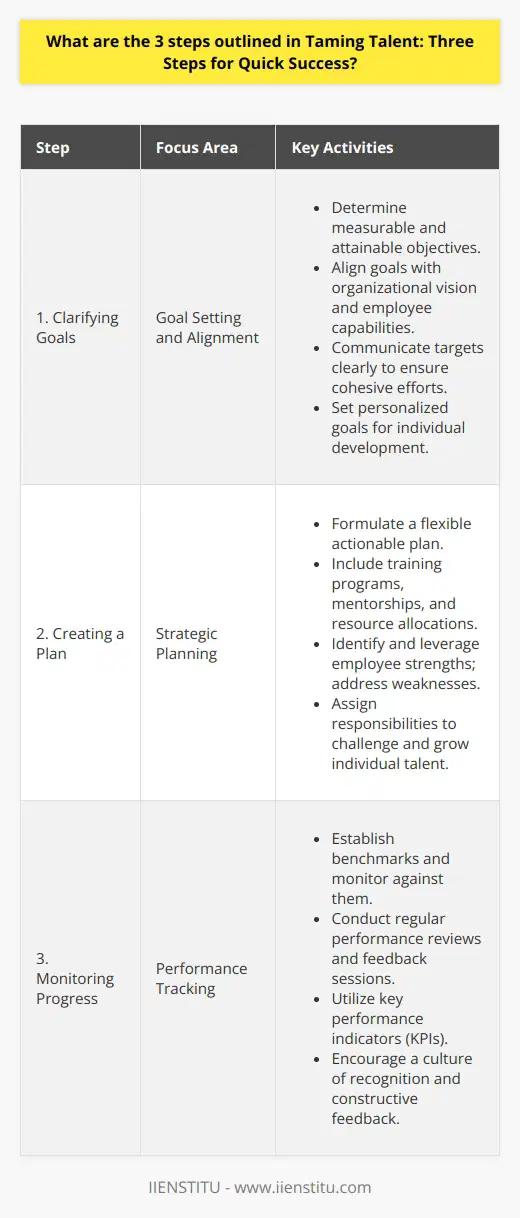
How can I use the given steps to quickly develop my talent?
Developing talent is an important yet often overlooked step in any successful life. Correctly set talents can provide skills that benefit people personally and professionally. To maximize a talent's potential, five essential steps should be followed.
The first step to understanding and developing talent is to assess the innate skills that a person currently has. Doing this involves focusing on natural interests and considering what activities come naturally or give a person the most excellent satisfaction. Recognizing a person's gifts and strengths is essential before exploring the possibilities of monetizing or using them in a career.
The next step is to identify potential outlets for the talent. Consider the skill's possible uses, opportunities, and benefits and how they can be used positively. After all, talent can be monetized or develop someone's strengths and abilities, depending on the individual's interest. Furthermore, listing potential outlets for a talent allows a person to focus on which ones can be developed further.
The third step is cultivating talent by taking the necessary steps for further development. This could involve creating a portfolio, taking courses, attending workshops or seminars, or joining an organization to learn more about the talent. All of these activities are beneficial in providing access to resources, mentors, and even job opportunities.
The fourth step is to use available resources to maximize the talent's potential. This includes:
Actively seeking out feedback and support.
Networking with people in the same field.
Joining professional organizations.
Doing research.
These activities provide valuable insight into how talent can be improved or further developed.
The final step is to practice and perfect the talent. It is essential to take the time to hone and polish the skill to the highest level of proficiency. Additionally, consistently practicing the craft while learning from mistakes can achieve mastery. Doing so requires dedication, effort, and patience but can be advantageous and have long-term benefits.
Overall, following these steps consistently and purposefully can help to develop one's talent quickly. Those dedicated to maximizing their abilities' potential can open new doors, challenge themselves, and grow professionally.
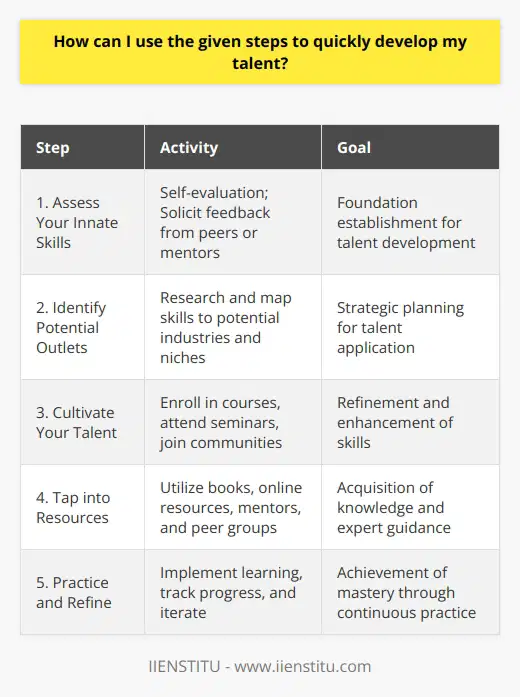
What benefits does this approach have over other methods of talent training?
The practical training of talent is a critical component in the success of any organization. As such, organizations should strive to maximize the impact of their talent training and development initiatives. One practical approach to this goal is using a blog post. This approach has several benefits when compared to other methods of talent training.
First, a blog post provides the potential for broader exposure to the training material. It creates a larger potential audience for the organization's message. Using social media and other forms of digital marketing, the blog post can reach a much wider audience than traditional methods of talent training. This can translate into a more substantial reach and impact for the organization's message.
Second, a blog post can provide a more personalized approach to talent training. By offering training through shorter, more frequent posts, organizations can better tailor their learning materials to the individual needs of their talent. This can provide a more targeted approach and ensures that any lessons learned through the blog post will have greater relevance and impact on each individual.
Third, blog-based talent training is cheaper and more efficient than traditional methods of talent training. The flexibility and scalability of blog post methods allow the organization to quickly adapt any material to the latest trends and technologies without the need for additional training materials. This can lead to cost savings for the organization that can be used for other talent development interests.
Finally, blog posts provide the potential for greater engagement from the talent. As blog posts are intended to be read or skimmed, they can quickly draw attention and spur conversation. Additionally, blog posts can capture insights from the broader audience as they can solicit comments and discussion of the material. This can increase talent participation in any training program, creating a more interactive environment.
Using blog posts as a talent training and development tool can give organizations a unique opportunity to maximize their talent's impact. Organizations can efficiently and effectively reach the intended audience by leveraging the potential reach of social media and the ability to tailor material to individual needs. Furthermore, blog-based talent training can provide cost savings that can be invested into other aspects of talent development — all while increasing engagement. As such, organizations should consider using blog posts for their talent training and development needs.
